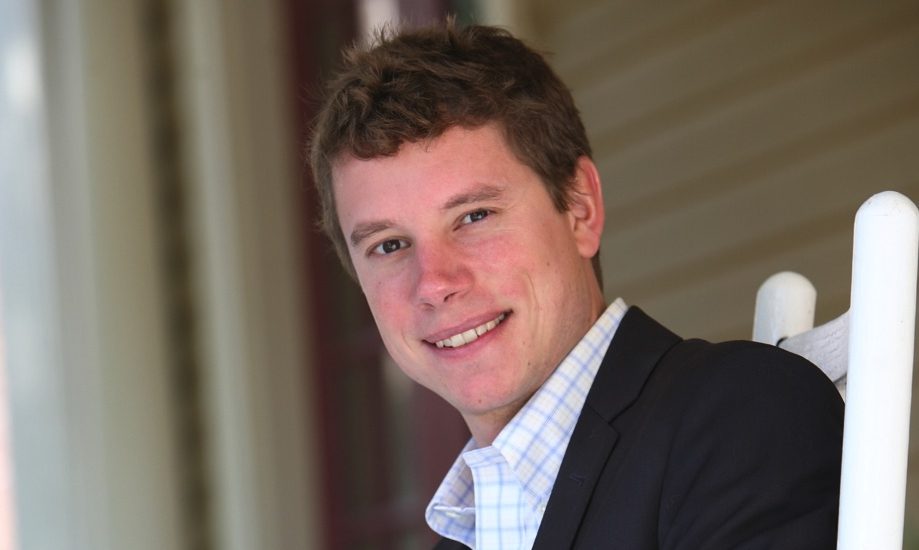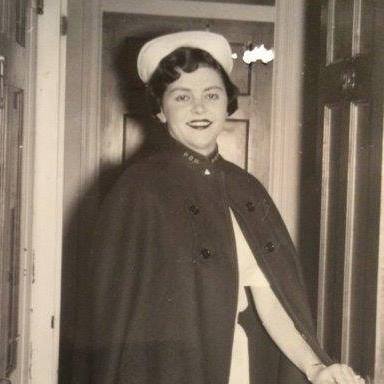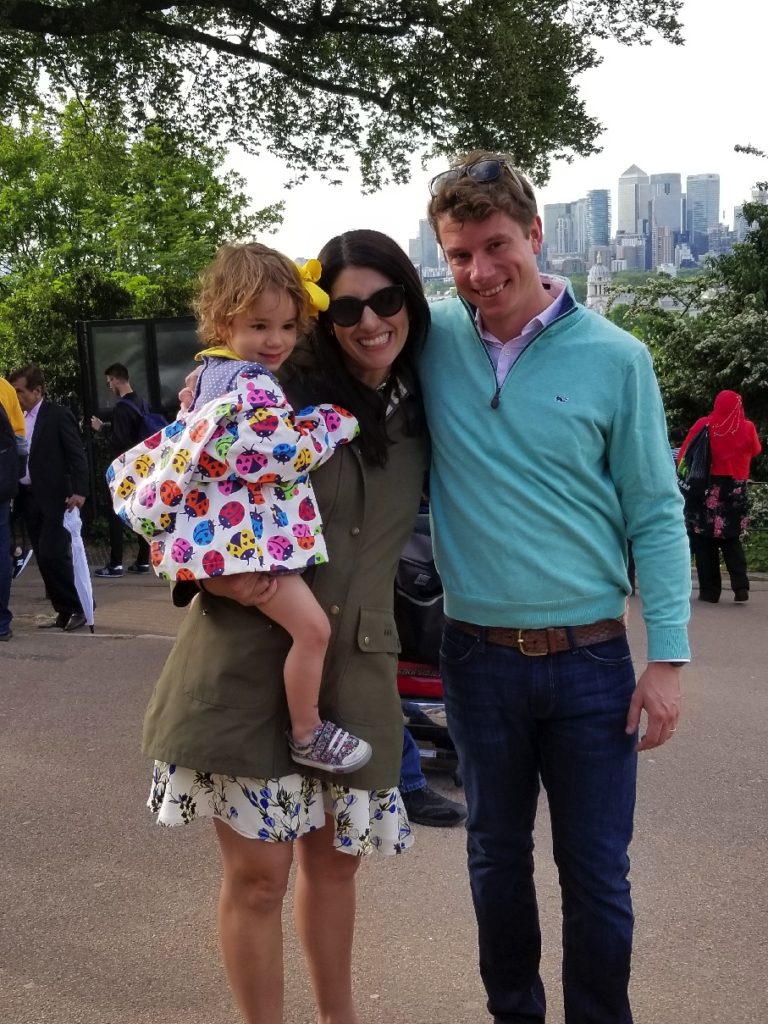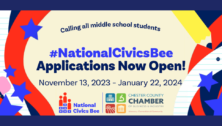Chester County Leadership: Harrison Saunders, CEO at Harrison Senior Living

Harrison Saunders, the CEO of Harrison Senior Living whose grandparents started the company 45 years ago, spoke with VISTA Today about growing up in Virginia, the lessons he learned from his first job as a teenager, and studying architecture, then landscape architecture at Syracuse University.
Saunders also discussed how he transitioned into the family business, the challenges and opportunities that lie ahead for Harrison Senior Living, and how he keeps his employees engaged.
Where were you born and where did you grow up?

I was born the oldest of three children and grew up in Suffolk, Virginia, home of Planter Peanuts. My father’s side of the family has been living in that area since Colonial times. He went to Swarthmore College and met my mom at a mutual friend’s wedding. She went to school in Virginia at Sweet Briar College, so they had a lot in common and settled in Virginia.
What did your parents do?
My father is an attorney. My mother did some marketing work and is also a philanthropist.
What memories do you have growing up in Suffolk, Virginia?
I remember living in a small, tight, supportive community. It’s grown significantly and become a bedroom community for the larger urban areas and the military with its many bases in the area.
Did you play any sports growing up?
I played just about all of them! Soccer, football, golf, basketball, volleyball. I liked to ski and surf as well. I wasn’t very good at any of them!
My dad had the opportunity to play tennis professionally, and I always just wanted to hit the ball over the fence.
My grandfather once came to see me play in a Little League baseball game. When the coach put me in the outfield because I was so bad, I just sat and played with the grass. My grandfather was pretty disappointed with me considering he was an outstanding baseball player in Coatesville back in the day. Baseball just wasn’t my sport.
Eventually, I gravitated to skiing because I liked to race. I liked the solo aspect of the sport.
What kind of jobs did you have growing up?
My first job when I was 16 was at a peanuts store – The Planters Peanut Center – during high school. Planters used to have little retail operation stores around the country. They eventually abandoned the stores, but this was one of the last stores of its kind in the country. I had a wonderful experience learning about small business and the importance of customer service.
I was a clerk, but I did everything there. I roasted peanuts, stocked the shelves, swept the store, whatever they asked me to do.
What life lessons did you take from there that stay with you?
Three lessons come to mind. First, the customer is always right and should come first. Second, always take care of the customer right in front of you. Finally, whether a customer was spending a quarter or spending money from a corporate account, it is essential to give everyone the attention they deserved.
Why were you working a part-time, minimum wage job, was it something your parents wanted you to do?
I liked the independence and having my own income. I could make $90 a week, and that would be enough to take my girlfriend out to dinner on Saturday night.
What kind of music were you listening to?
Everything! Southern rock especially – Marshall Tucker, Lynyrd Skynyrd, Little Feat. We were fortunate to have some unique live music venues where I lived growing up, so I was able to see some good shows.
I also liked some edgy, electronic music. Not many concerts in that genre but I still listen to some of it today. At work, I listen to anything from Red Hot Chili Peppers to Mozart to Massive Attack.
Where did you go to college?
I went to Syracuse University in Upstate New York for Architecture. They were a top five architecture program at the time. I did a summer college program there, which was much different than the winter! I got very good at shoveling snow.
It was a great choice because Upstate New York is a great place to study architecture due to so many different styles.
Looking back, was Syracuse the right choice for you?
It was a challenge being far from home in a much different culture than I grew up in. At the same time, it was neat to be in an urban, yet small town. I waited tables while in college, so I was able to meet a lot of locals in the area. I enjoyed that aspect of my college career very much.
Syracuse shared a campus with the SUNY College of Environmental Science and Forestry. After some time, I realized I was less interested in the buildings themselves and more interested in the space between them. I did two years in architecture at Syracuse and three years at ESF in the early 2000s.
The basketball team wasn’t so bad either! I was there when the basketball team won the championship, and two of my neighbors were on the team.
Who were the people who gave you your big breaks along the way?
I had a wonderful professor named Emmanuel Carter. He taught Urban Planning, which I took particular interest in. When I made the transition from architecture to landscape architecture, I had to catch up on some general education credits, which he helped me with. One semester, I had to take about 25 credits to stay on track!
I’ve been very fortunate to have great relationships with my internship contacts. In college, my friends were going to the beach for the summer, while I worked in architectural firms in Virginia. Those folks were very patient with a young college kid, and I still keep in touch with many of them today.
I got licensed as a landscaped architecture faster than anyone in my graduating class because I was able to leverage that experience.
Landscape Architecture wasn’t discussed very often back then, was it?
It’s certainly getting more attention now, especially with the environmental crisis we’re experiencing. There’s a lot of attention going to landscape architects to find a solution. New York City is now devoting millions of dollars to extending the city’s shoreline to ensure it’s viable for the future.
Landscape Architecture gave me a diverse skill set to go in many different directions, which is important for someone like me who doesn’t want to be so focused on one thing. I transitioned from landscape architecture to my current field through Urban and Master Planning.
You could have gone down any path, with Planning or Master Planning, but you chose to get involved in your families senior living business. Why is that?
Family and community. In architecture or landscape architecture, you’re often tucked away in a back office or executing someone else’s ideas. I’m a pretty social person. When I began to do landscape architecture work for Harrison Senior Living, I was interacting with people from all walks of life, and working with them in ways I would not have if I was in stuck in a back office.
My grandparents started this company 45 years ago, so that’s given me a sense of purpose as I retain my family’s legacy. I also appreciate giving back to the community they were from. I was drawn to the small towns.
Are you surprised where you are now at Harrison Senior Living? Or did you anticipate this?
I am very surprised, actually. I was living in D.C., which is about two hours from all of our campuses, and had a nice social life established. I thought I would just maintain the Eastern Shore facilities and try to grow the company southward. Ultimately, one of my uncles who was involved in operations left the firm, and they needed someone from within the family to step into a greater operational role.
Six years ago I was told that if I wanted to carry on the mission, I would need to move to Philadelphia. It was an opportunity to get to know more communities and implement some of my own ideas. I wouldn’t have been able to do that on the architectural side.
It sounds like you really want to transform Harrison Senior Living. In 2019 and beyond – What are your challenges and opportunities moving forward?
I’m not an easily satisfied guy. We want to carry out our mission over the long term and on a much larger scale. This is not a profitable industry, so we have to be creative. We need to have a unique, competitive advantage. Community is what sets us apart from the larger corporations. Knowing your community and serving it well has made us successful.

Right now, we offer independent and assisted living in the Coatesville area. We provide skilled nursing services, memory care, rehabilitation therapies in the Christiana, Gap, and Parkesburg areas. Together, we are creating a continuum of care. If someone were to come in at age 65 for independent living, they can have the peace of mind knowing they can stay and network with us all the way through.
To further serve our community, we would like to fully build out our Coatesville and Christiana sites with more independent living. We could also reach our community through home care, which is an area we’d like to extend to.
How do you keep employees engaged?
We are creating advisory boards for each of the market areas we are serving to be sure our stakeholders have a real say in what we are doing. We recently developed a “values statement” which was rolled out to our employees and communities. We have town hall meetings quarterly at each of our five locations, so I was able to sit down with staff and ask if they felt like they were part of a family and enjoyed working here. We look for positive feedback, as well as constructive criticism in these meetings so we can know what to do better.
How do you create that family mentality?
You get to know your employees! Who they are, their kids’ names, if they are getting married, having a baby, a death in the family, a graduation in the family, etc. You help them along the way and push them to get the most out of life. It’s important to seek feedback from them, so you know whether or not they are happy. It’s my goal to walk around and engage with our members, staff, and visitors. I’ve shoveled snow and laid mulch with our Maintenance Directors. I’ve prepared food with our dining teams. You really get to know people when you work alongside them.
You started off by saying this wasn’t a profitable industry, how do you control costs?
You have to work hard and surround yourself with people who work hard. You have to make sacrifices to make ends meet. We negotiate hard on material costs. We’re still a pretty small organization, but we do have some buying power. We staff at higher levels than most competitors to ensure high quality but count on our people to deliver the most during their shifts.
The community understands our struggles, so they know we are not trying to take advantage of them. Being honest is essential in this business. You have to be willing to accept the potential for honest human error in this business. We have to be honest with our residents and their families at all times.

What do you do in your downtime, Harrison?
I have a three and a half-year-old daughter with my wife. She does swimming, ballet, gymnastics, art, music. Anything my wife can sign her up for! Like all parents, we think she’s a real prodigy! We also have another on the way, so we are preparing for that.
We live in Center City. When we moved here, my wife and I wanted to get the full city experience. It’s also important to me to be surrounded with great resources, which the city is full of. We want to live the urban life as long as we can. I believe strongly that Harrison Senior Living really benefits from my exposure to so many great minds in this diverse, urban setting.
My wife and I both grew up in rural areas, with deep respect for nature. We do our best to ensure we spend a great deal of time in nature, especially for our daughter. When I work in Chester County my daughter thinks I’m “working with the horses” and when on the Eastern Shore, I’m “working with the chickens.” I bring her along whenever possible.
Finally, Harrison, what is the best piece of advice you’ve ever received?
I don’t know if I can narrow it down to one piece of advice. I think you need to be a more seasoned leader than I am to really reflect back on one thing, seared in over a series of years. I belong to a number of organizations and executive groups, so I’ve had a lot of successful coaches over the years. Whether it’s one of those executives, my troop leader who saw me through to earn my Eagle Scout badge or my first boss at the peanut store, each of those individuals has given me monumental pieces of advice over the years.
I’ve spent my career trying to tap into so many resources and then synthesize everything I get out of them to arrive at my own conclusion. No one ever sees the full picture. Knowing what you do know and what you don’t know is so important.
_______
Publisher’s note: Laura Wagoner contributed to this Chester County Leadership profile.
Connect With Your Community
Subscribe to stay informed!
"*" indicates required fields

































![95000-1023_ACJ_BannerAd[1]](https://vista.today/wp-content/uploads/2023/03/95000-1023_ACJ_BannerAd1.jpg)














